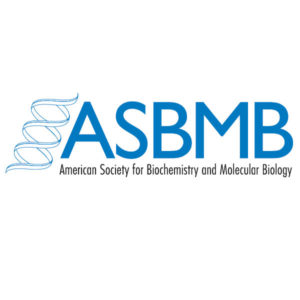Examples of PALM Fellow Projects
Deborah Zies, University of Mary Washington
I worked on transforming my genetics lectures into an active learning format. The course is sophomore level and required for all biology majors. I had 44 students working in groups of 4 in a classroom with fixed, tiered bench style tables. It was not the best for team assignments, but with groups of 4, I was able to manage. My mentor and I worked on developing assignments for the first chapter covered in the course, Mitosis and Meiosis. I was able to use the framework we developed for that chapter to transform many of the lectures in my course. I collected assessment data and presented my analysis at the SABER meeting in July.
Steve Elmer, Michigan Technical University
I implemented a series of active learning activities in a freshman level kinesiology course (~40 students, combination of majors/non-majors, lecture classroom). Specifically, I used three dimensional physical models to help students engage more sensory modalities (visual, auditory, kinesthetic, tactile) to learn difficult concepts. I have also explored how group testing can facilitate collaboration among students and offer a meaningful learning experience. For my PALM project I have received mentorship from Professor Stephen DiCarlo.
Michael Moore, Baylor University
My project was to develop and implement challenging interaction interventions in the Baylor Learning Assistant pedagogy course, which is taught in the Biology Department to Biology Learning Assistants. The goal of these interventions is to help our Baylor learning assistants develop strategies for dealing with challenging interactions that they may face while assisting instructors during active learning in lecture courses ranging from introductory biology to genetics to immunology.
Amy Wangeline, Laramie County Community College
My project is for introductory biology for science majors (which for us ranges from agriculture to health sciences) to add hands on activities that were previously in the lab into the lecture including engaging activities like extracting DNA from strawberries to practice activities like using legos to visualize cellular respiration. The lab has been redesigned to be inquiry based and much more focused on experiencing science instead of experiencing content, leaving the content aspect to be mainly in the time designated for lecture. Our classes are limited to 24 students, and both the lecture and the lab are taught in lab classrooms with benches.
Lara Goudsouzian, DeSales University
Stanley Lo and I are currently working on incorporating active learning, including problem-solving and primary literature assignments, into my new, upper-division Genetics course which is required of all Biology majors at DeSales. This course is small, at 15-20 students, and is taught in a lecture-style classroom with fixed furniture.
Heather Anderson, Stetson University
Mari Hopper and I are working on a project to determine if problem-based learning using interactive polling of individual students interspersed in brief lectures and worksheet activities is more effective on student learning gains and higher order skill development than team-based learning using table discussions after an in-class hands on activity that illustrates a physiological concept.
Keri Kemp, University of Alabama, Birmingham
As a postdoc, I have developed a new course on bacterial symbiosis and will use my PALM Fellowship to work with Dr. Sami Raut to incorporate class debate active learning modules as a way to help students reach higher level Bloom’s cognitive abilities such as analyzing, evaluating, and creating.
Kim Nguyen, Mount San Antonio College
With the mentorship of Dr. Chaya Golpolan I flipped the lectures in my anatomy class and replaced traditional lectures with discussions and working in small groups to discuss case studies, kinesthetic activities, and review games. I also collected information about student performance and attitudes towards the flipped classroom approach.
Carlos Goller, North Carolina State University Biotechnology Teaching Program (BIT)
My PALM project involves redesigning my upper division metagenomics course with guidance from my mentor, Dr. Davida Smyth. We are reevaluating learning objectives to identify those that are best suited for this course, and analyzing which active learning techniques enhance the value of anew series of reading assignments where students annotate published papers using Hypothes.is and co-create an open educational resource.
Madi Narayanan, Mercy College
In my Hispanic-serving institution I would like to implement a partial flipped classroom approach (a hybrid format) in my general chemistry class, through Dr. Uma Swamy’s mentorship, in addition to continuing to use group problem solving in class. I also have students do a mini-poster presentation on a project whose theme is “chemistry and civic issues”.
Jaime Mirowsky, SUNY College of Environmental Science and Forestry
Working with mentor Mindy Reynolds, I will use a flipped classroom approach in which students are required to do readings prior to coming to class, allowing class time to be used for different student-led activities in my newly developed upper division biomedical ethics course.
Anusha Naganathan, University of Rochester
I wish to explore the use of guided-inquiry, the goal of which is to provide prompts and guidance to enable student-driven inquiry. Because I am a postdoc and do not have my own courses right now, I will work with my mentor Katherine Bates to incorporate this technique into her upper division genetics course. One topic to have students explore is the structure-function relationships of proteins in genetic disorders.

PALM is funded by NSF Research Coordination Network in Undergraduate Biology Education grant #1624200. Project support from Professional Societies Alliance for Life Science Education


